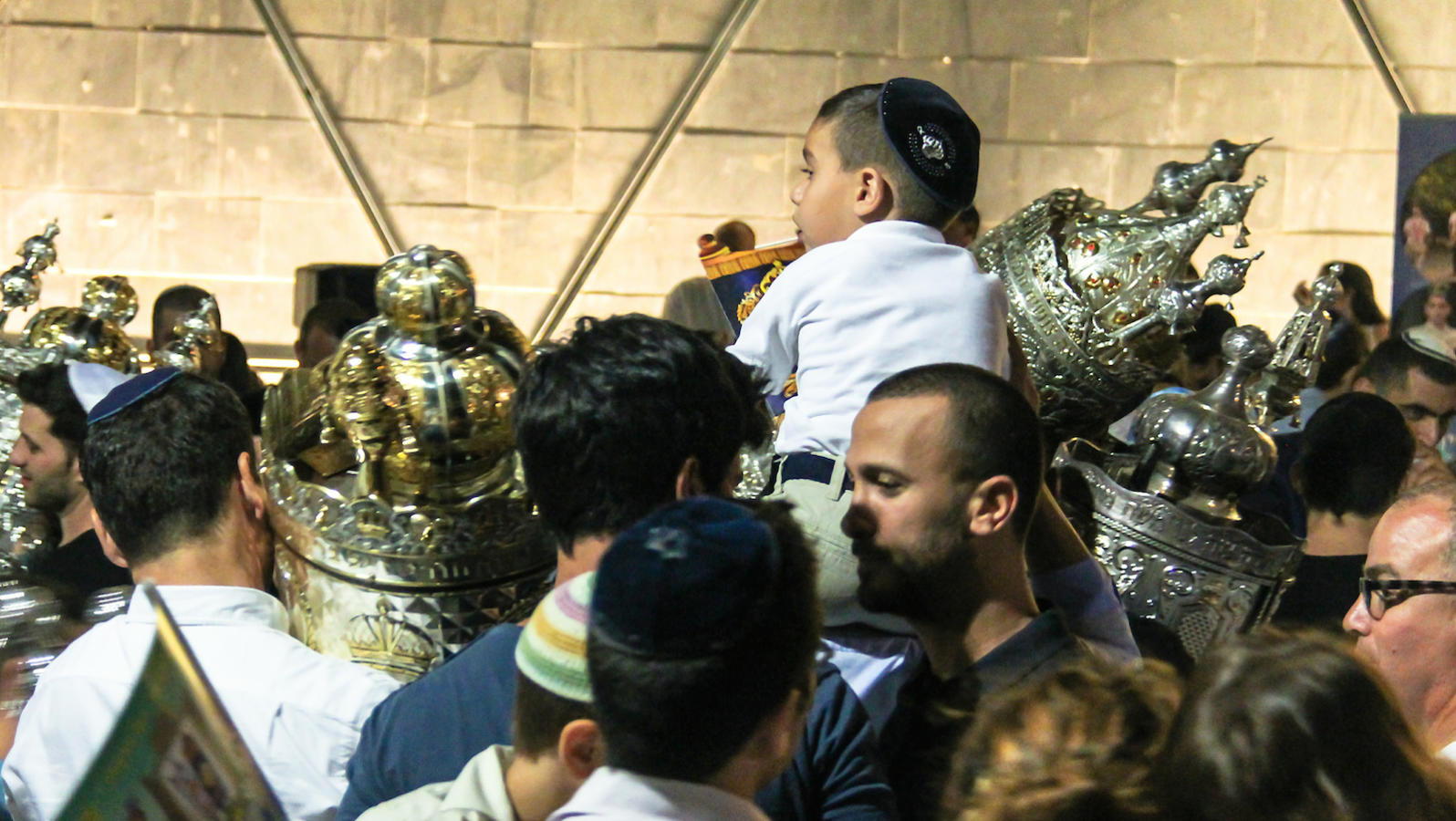We have seen that there are two kinds of time — historical time, which marks progress, and cyclic time, which is marked by recurring patterns. Historical time is centered in the High Holiday festival cycle. Cyclic time is found in the three pilgrimage festivals. is the end of the pilgrimage cycle, and yet, by its placement in the year, also brings to a close the High Holiday cycle. Seemingly, then, Sukkot comes at the end of both kinds of time.
Redemption is Sukkot’s theme and as such it answers the great question of Yom Kippur: Are we forgiven? Yet Sukkot only promises redemption and thus reflects an underlying uncertainty that bespeaks a cruel reality. Since redemption still has not come, Sukkot continues to signify our status as wanderers lost in the desert.
Despite and Yom Kippur, most of us are still far away from each other and the Other. Despite the liberation of and the revelation of Shavuot, we do not end the pilgrimage festival cycle by entering the Promised Land; we are left wandering as the Promised Land eludes our grasp. On Sukkot, we rejoice with our and etrog, imbued with a sense of relief, security, and joy now that the penitential days are over, and yet we sit in our sukkot, those temporary dwellings, open to the winds of time–both kinds of time.
If Sukkot brings both cycles to a close, it does so by looking toward the end of time and the final redemption. Sukkot’s haftarah [prophetic reading], from the prophet Zechariah [chapter 14:1-21], describes how in the future all the nations will go up to Jerusalem in peace to worship the Lord on the holiday of Sukkot.

Help us keep Jewish knowledge accessible to millions of people around the world.
Your donation to My Jewish Learning fuels endless journeys of Jewish discovery. With your help, My Jewish Learning can continue to provide nonstop opportunities for learning, connection and growth.
To understand Shemini Atzeret and Simchat , we must go back a bit. The seven days of Passover are followed by the 49 (7 X 7) of the omer, climaxing with the 50th day of Shavuot. Thus liberation is linked with revelation and the giving of the Torah. The experience of receiving the Torah is awesome. It is characterized by boundaries set around the mountain and a sound so terrible that the people flee. The mountain looms threateningly over their heads. There are no joyful outbursts at Sinai, only fear and anticipation. The experience concludes with the people’s acceptance of the Torah and the Covenant.
Shemini Atzeret and Simchat Torah are preceded by Sukkot, again seven days followed by one day, but here there is no intervening period as there is between Pesach and Shavuot. Shemini Atzeret is the eighth day–that is, the day after seven. Seven, being a perfect number in Judaism, signifies a complete unit of time–each week ends with the seventh day, Shabbat. Thus, the eighth day is the day after time. It is the end of both kinds of time. It is thus not just the promise of redemption but the actual moment of it. God said, “Remain with me [atzeret] an extra day,” a time beyond time.
Shemini Atzeret is a taste of the messianic, of the time when Torah, the Holy One, and Israel will be one. This comes to a climax with Simchat Torah. Instead of circling around the Torah scrolls as we did on Sukkot, during hoshanot we circle with the Torah scrolls. We take the connecting link between us and God–our [marriage contract], as it were–and circle around an apparently; empty space that is filled with the One who fills everything.
Simchat Torah celebrates a Torah of joy, a Torah without restrictions or sense of burden. We circle God seven times with the Torah and then no more. There is no eighth circling. We read from the last portion of the Torah just before we enter the promised land, but leave the last few verses unread–the Torah unfinished. It is a magical moment when all that exists are God and Torah and ourselves. We throw ourselves into endless circles of dancing and become time lost.
But this moment must pass. Time does continue, and therefore the unity is broken. The sun rises and historical time, briefly halted, begins again. Cyclic time begins as well, for we start again the Torah reading cycle. There is no end to Torah; after Deuteronomy, we immediately begin Genesis as part of a constantly renewing cycle.
We also read the first chapter of the Book of Joshua, which shows that even after the Torah there is still something else. The Torah did not end last night. There is more to hear, for not only does the Torah cycle begin again, the Torah itself enters historical time beginning with the Book of Joshua.
Then, too, the Book of Joshua is the fulfillment of the dream of entering the Promised Land. It tells us that last night was no illusion, that the moment of redemption is always at hand.
Reprinted with permission from The Jewish Holidays: A Guide and Commentary (HarperCollins Publishers Inc.).




